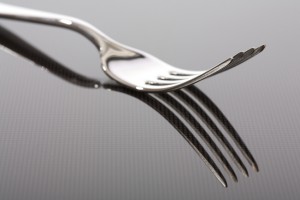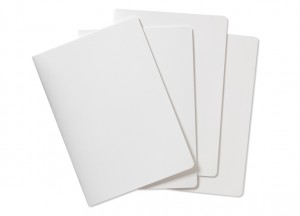Vegan recipes
Being vegan doesn’t equal eating healthy vegan food. Or that you’re a hipster. Vegan food and vegan recipes CAN be packed with micronutrients and macronutrients. Or simply healthy recipe inspiration.
Raw vegan
Raw vegan and vegan recipes or vegan paleo diet can be limiting. Vegan recipes e.g. plant based diets can be a GREAT WAY to INTRODUCE VEGETABLES and FIBRE into a dairy free menu. Whether you are an ethical vegan or trying to eat dairy free and meat free for health reasons, you can get a diverse variety of nutrients in vegan recipes.
RDA for Iron

IRON FOR CHILDREN – Infants 6-12 months……….11mg RDA FOR IRON Children ages 1-8………….. 7-10mg RDA FOR IRON
Adolescents ages 9-13 years
8mg RDA for Iron
Your IRON NEEDS may be different depending on various health concerns. For example, if you are affected by the following, for your RDA for Iron may be HIGHER. Oesophageal cancer, stomach cancer, colon cancer. GI bleeding from long-term aspirin, ibuprofen, arthritis drug use, peptic ulcers, cirrhosis. If you’re a female menstruating, your iron needs may also be higher.

RDA FOR IRON WOMEN 51+ years………… 8mg RDA for Iron PREGNANT Females all ages………… 27mg RDA for Iron Females ages 14-50 years…………….. 15-18mg RDA for iron
Iron sources vegan
Organic Soybeans (white, cooked) 86mg or 1/2 cup = 4.4mg
Sesame seeds (roasted and toasted) 28mg or 1oz = 4.2mg
Lentils cooked 99g or 1/2cup = 3.3mg Spinach cooked 90g or 1/2cup = 3.2mg
Chickpeas cooked 82mg or 1/2cup = 2.4mg Lima beans large cooked 94g or 1/2cup = 2.3mg
Kidney beans cooked 91g or 1/2cup = 2.2mg Swiss chard cooked 88g 1/2cup = 2.0mg
Quinoa cooked 93mg or 1/2cup = 1.4mg Dried apricots 40mg or 1/3cup = 1.0mg
Pumpkin seeds 28g or 1oz = 1.0mg Kale cooked 100g = 0.9mg
Broccoli cooked 100g = 0.7mg Fava beans cooked 100g = 1.5mg
Beets 100g = 0.8mg
RDA for iron
SUBSCRIBE today for INTERVIEWS WITH CELEBRITY PERSONAL CHEFS
Not enough iron means red blood cells are fewer and smaller. So, they’re not transporting sufficient O2 where it needs to go. If you suspect that you may be iron deficient, make an appointment with your doctor. He or she will probably look for signs of anemia or anaemia such as pale skin, irregular heartbeat, rapid breathing, capillary refill. They might also do an exam to check for internal bleeding. However, most commonly, iron deficiency is found by doing a blood test that tests for hemoglobin and hematocrit levels.
Heme iron
CAN WE GET A VEGAN RECIPE with heme iron? Heme iron is found in meats, fish, and poultry. This type of iron is in foods that contain hemoglobin. The body absorbs 7-35% of heme iron.
Non heme iron
This is found in plant foods. The body absorbs 2-20% of non-heme iron. The percentage is lower because non-heme iron is more sensitive to other dietary factors that may limit its absorption. You can be inspired by vegan recipes to eat such iron rich plant foods.
One research study showed that by adding just 63mg of vitamin C (the amount in ½ of a bell pepper or 1 small orange) to a meal, iron absorption from plant foods tripled. Vitamin C is an acid, ascorbic acid and acids increase the bioavailability of the iron.
It is possible to eat lots of iron rich plant foods or animal-based foods and still be anemic or anaemic. Often this is because of a weakened digestive system due to celiac disease, inflammatory bowel disease IBS, or other conditions that cause insufficient stomach acid. In these cases, 25-50 mg of daily iron supplementation may be recommended. Always check with your doctor for specific recommendations.
In fact some studies show that vegans consume as much iron as omnivores and sometimes more.
Although iron needs can be met completely with non heme iron it is important to pay attention to all the factors that may affect absorption. [tweetthis]Iron needs can be met completely on #vegan diets Know factors affecting absorption[/tweetthis]
This is especially the case if someone is iron deficient. While meat protein nearly doubles the absorption of non-heme iron vitamin C is even more effective in increasing absorption.
Lower iron levels
Tannins found in tea leaves, red grapes, chocolate and coffee block the absorption of iron by about 50% (study here). However, consuming these foods an hour before or an hour after the iron rich meal has no effect on iron absorption. Vegan recipes can be inspiring ways to get more plat based iron rich foods combined with the right amounts of vitamin C.
Phytates are important antioxidants and anti-inflammatory agents found in highest quantities in wheat bran, soybeans, peanuts, pinto beans, kidney beans etc. Phytates bind to non-heme iron and lower its absorption. But soaking, fermenting, sprouting, and cooking all reduce phytate content by 50-75%.
Calcium Supplements & Dairy Foods compete with iron for uptake in your intestinal tract
Zinc and Manganese supplements
Peppermint and Chamomile
Antacids decrease iron absorption because they reduce stomach acid
Whole egg protein
Vegan recipes
OK so now we’re spoiling you. SUBSCRIBE today for our mini nutritional video series!
FOUR ingredients – we’ll be rotating – to our featured vegan recipes. Sound good. Get them now! Fitting for EAT DRINK TAKE MAKE.
IN THE FOUR PHASES.




